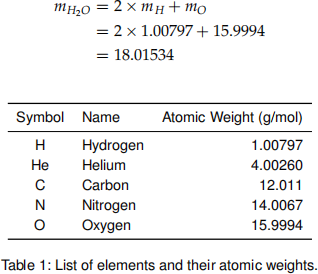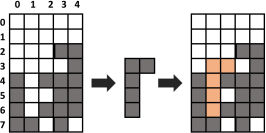COM00015C Software 1 2020-2021
Hello, dear friend, you can consult us at any time if you have any questions, add WeChat: daixieit
COM00015C
BEng, BSc, MEng and MMath Degree Examinations 2020-2021
Computer Science
Software 1
1 (20 marks) Python Programming: Basic Programming Structure
The code must be written in the provided file question_1.py, failing to do so will result in loss of marks.
The Caesar cipher is a very simple encryption method and it is easily breakable. In this question
we used an improved encryption method. Given a plain text message T of n characters using an alphabet A of m letters, and a list S of n positive integers from the set {0, 2, .., k - 1}, T is encrypted by shifting the kth character T[k] by an amount S[k]. An example is given in Figure1
where T = [B, A, B, Y] and S = [2, 1, 1, 3]. The first character ’B’ is shifted by 2 giving the character ’D’, then the second character ’A’ is shifted by 1 giving ’B’ and so on. The encrypted message is "DBCB".

Figure 1: Example of the encryption method proposed in this question.(a) the top row represents the character to be encrypted, the bottom row is the encrypted character given a certain shift. Note how the alphabet is repeated in the bottom row. (b) shows the encryption of
the message "BABY" using a shift sequence 2113 resulting in the encrypted message "DBCB".
(i) [10 marks] Implement the function encrypt(message, shifts, alphabet) that takes a plain text message as a string, the shifts sequence as a list of integers, and the alphabet as a string. The alphabet can be any sequence of symbols, not necessarily the English alphabet. The function returns a string containing the encrypted message. The function raises a ValueError exception if:
• the message contains characters that are not in the alphabet,
• the size of the shifts is not the same as the size of message,
• shifts contains negatives values or values greater or equal to the size of the alphabet.
(ii) [10 marks] Write the docstring for this function. The docstring must follow Google
documentation style.
2 (15 marks) Python Programming: String and List
The code must be written in the provided file question_2.py, failing to do so will result in loss of marks.
The aim of this exercise is to transform a string representing a molecule into a list of tuples, where the first element of a tuple is the String corresponding to an atom, and the second element is the number of occurrences of that atom at the given position in the structure of the molecule. For example, the molecule CO2 given by the string ’CO2’ is represented by the list of tuples [(’C’,1),(’O’,2)].
Glucose C6H12O6 is represented by ’C6H12O6’ and [(’C’,6),(’H’,12),(’O’.6)].
The Acetic acid molecule CH3COOH is given by the string ’CH3COOH’ and the list of tuples [(’C’,1), (’H’,3), (’C’,1), (’O’,1), (’O’,1), (’H’,1)].
Some atoms are described by more than one character, like calcium Ca. The first character is uppercase and the second character is lower case. For example, the calcium carbonate molecule CaCO3 is represented by the string ’CaCO3’ . Its list representation is
[(’Ca’,1), (’C’,1), (’O’,3)].
(i) [15 marks] Implement a function molecule_to_list(molecule) that takes a string
representation of a molecule as described above and return its list of tuples representation. The function raises a ValueError exception if:
• molecule does not start with a uppercase letter from the English alphabet,
• molecule contains characters that are not alphanumeric.
• molecule has an invalid format, for example the symbol of an atom is lower case like ca instead of Ca or h instead of H.
Up to 10 marks will be given if the function handles molecules containing only single character atoms, and up to 15 marks if the function can handle any kind of molecules.
3 (10 marks) Built-in data structures: Dictionary
The code for this question must be written in the provided file question_3.py. The standard atomic weight of an element is the average mass of the atoms of an element. A sample of atoms and their standard atomic weight is shown in Table 1. The molar masses of molecules are calculated from the standard atomic weights of each element. One can compute the molar mass of a compound by adding the standard atomic weights of its constituent atoms. For example the molar mass of water (H2O) is given by:

For this question, the table of atomic weight is stored in a global variable ATOMS. The variable ATOMS is a dictionary where the keys are the atoms’ symbol, and the values are another dictionary. This second dictionary has two keys, the ’name’ mapped to the full name of the atom and the ’weight’ mapped to the atomic weight of that atom. An extract from the dictionary is given below.
ATOMS = {’H’:{’name’:’Hydrogen’, ’weight’:1.00797},
’He’:{’name’:’Helium’, ’weight’:4.00260}, ...}
A molecule is represented by a list of tuples, where the first element of a tuple is the String corresponding to an atom symbol, and the second element is the number of occurrences of that atom at the given position in the structure of the molecule. For example, the molecule H2O is given by [(’H’,2),(’O’,1)], whereas the Acetic acid molecule CH3COOH is represented by
[(’C’,1), (’H’,3), (’C’,1), (’O’,1), (’O’,1), (’H’,1)].
(i) [10 marks] Implement a function molar_mass(molecule) that takes a list of tuples representing a molecule and returns its molar mass. The function must raise a ValueError if the molecule contains an unknown atom, that is an atom symbol that is not in the dictionary
ATOMS.
4 (15 marks) Recursion
The code for this question must be written in the provided file question_4.py.
Warning: if the implemented function for this question is not recursive, a mark of 0 will be awarded. The aim of the exercise is to check if a game level is feasible or not. The game is a simple 2D platform composed of springboards with power ups and deadly traps (represented by mines). The power ups’ number below the springboard represents the player’s maximum jump
length from that board. The aim of the game is to depart from the first springboard and arrive to the last one without stepping on a mine. Figure 2shows a game level that is feasible, whereas Figure 3shows a game level that a player cannot win.

Figure 2: Example of a game level that is feasible. One solution is to jump 2 steps from index 0 to 2, then 2 steps from index 2 to 4 and finally another 2 steps to the last index.

Figure 3: Example of a game level that is impossible to complete. Whatever the choice you make, you will always arrive at index 3 which is a deadly trap. It is therefore impossible to reach the last index.
To represent the level, we have chosen a list of non-negative integers. The starting point of the level is at the first index of the list, and the exit is at the last index of the list. The numbers in the
list represent the power up of the springboard at that position. A mine is represented by the value 0. In this context, if the element at the last index is 0 then the level is not feasible. For example, the board shown in Figure 2 is represented by the list [3,1,2,0,4,0,1]. Similarly, the board shown in Figure 3 is represented by the list [3,2,1,0,2,0,2].
(i) [15 marks] Implement a recursive function check_level(level) that takes a list of positive integers representing a game level and returns True if the level is feasible, False otherwise. The efficiency of the solution does not matter, you should implement a brute force approach that tries all possible cases.
5 (30 marks) User defined data structures
The code for this question must be written in the provided file question_5.py.
In this question, we will start building the game Blotris, a knock-off version of Tetris™. The aim is to add many random shapes to the board before we cannot add more. In Figure 4we can see how a shape is added at a given position. When a row is fully occupied, it is removed and the rows above that row are shifted down. For example, when adding the shape in Figure 4, two rows are fully occupied. Figure 5shows how these two rows are removed and how the rows above them are shifted down.
(i) [5 marks] Implement a class Blotris, with a constructor that takes two integer parameters rows and cols in that order. The parameter rows represents the number of rows on the board, and cols the number of columns. The board shown in Figure 4was constructed with 8 rows and 5 columns.
• the class Blotris has an instance attribute _board which is a 2D list of integers representing the board. The value 0 represents an empty block, the value 1 an occupied block.
• the constructor should initialise _board to a 2D list of rows rows and cols columns containing only zeros.
• The constructor raises a ValueError if rows or cols is not greater or equal to 5.
• You can add more instance attributes if needed.
.
(ii) [10 marks] Implement the method add(self, shape, row, col) that adds a shape to a game board at row row and column col. The pair (row, col) is where the top-left corner of the shape should be. Figure 4shows a shape added at row = 3 and col = 1. Remember
rows and columns start at index 0.

Figure 4: Example of adding a shape to the game board at row 3 column 1, that is the fourth row and the second column.
A shape is represented by a 2D list, where 0 represents an empty block and 1 an occupied block. For example, the shape added in figure 4 is represented by:
[[1, 1], [1, 0], [1, 0], [1, 0]]
• A shape can be added at a given position on the board only if it does not overlap an occupied block and is within the bounds of the board. For example, the shape in Figure 4 could not be added at row = 3 and col = 0.
• If a shape can be added, then the board is changed accordingly and the method add returns True. Otherwise, the method returns False and the board remains unchanged.
• If the shape is out of the boundary of the board, the method returns False but must not raise an exception.
(iii) [15 marks] Implement the method update(self) that updates the board, that is removes fully occupied rows and shift down the rows above accordingly. Figure 5shows an example. In this example, rows 4 and 6 must be removed (red marks), and all rows above shifted accordingly. It can be done in several steps, first by removing the full row closest to the bottom and shifting the rows above, then removing the next full row closest to the bottom and shifting the rows above, and so on until there are no more full rows on the board. Using this algorithm, some rows may be shifted multiple times. If you prefer you can implement your own algorithm to solve the problem. It should be noted the size of the board must not change. The method does not return anything.

Figure 5: Example of updating the board to remove rows that are full.
2022-01-05